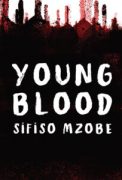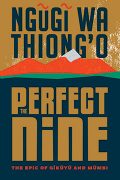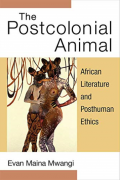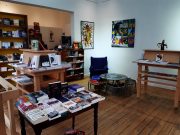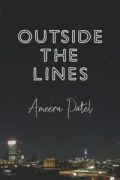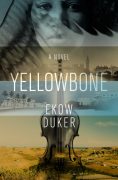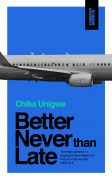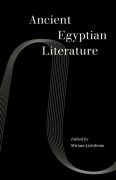| So this is not history, it is a revelation;
A revelation of love
A revelation of hope
A revelation of perseverance
A revelation of bravery
A revelation of knowledge |
Kwa ũguo rũũrũ ti hithitũrĩ ni kĩguũrĩrio
Kĩguũrĩrio kĩa wendo
Kĩguũrĩrio kĩa mĩwhoko
Kĩguũrĩrio kĩa ũmĩrĩru
Kĩguũrĩrio kĩa ũkamba
Kĩguũrĩrio kĩa ũmenio |
After decades of producing fiction, plays, memoirs, and essays, earning thirteen honorary doctorates and a UCI Medal, distinguished professor of English and comparative literature and literary and social activist Ngũgĩ wa Thiong’o returns to the printed page to bring us the epic of his own people, and he does so for his first time in a fully-fledged poetic prose verse publication.
The title The Perfect Nine refers to nine daughters, who in fact were ten in number—hence, the “perfect nine.” It retells an origin myth: that of the founding parents of the Gĩkũyũ people’s ten clans, their mother Mũmbi and father Gĩkũyũ; the ten clans are named for their ten daughters, each of whom was matriarch of a clan.
Introduction: “The landscape was beautiful”
The book takes the reader to Kenya, and is set around Kere-Nyaga, the Gĩkũyũ name for Mount Kenya, which means “that which possesses brightness, or mountain of brightness” (Kenyatta 1953 (1938), 234). Kere-Nyaga is the second-highest mountain in Africa (after Kilimanjaro, Tanzania), and is regarded as one of the mountains of the moon, a mythical mountain, where people are enabled to “perform their magic and traditional ceremonies in undisturbed serenity, facing Mount Kenya” (Kenyatta 1953 (1938), xxi). Deferring to the original name of Mount Kenya allows us to understand the mountain’s connection with the Supreme Being, called Ngai or Mulungu, whom the Gĩkũyũ address in prayers and sacrifices as Mwene-Nyaga, which means “possessor of brightness” (“Owner of Ostrich Whiteness”, ibid., 19). As later explained by the first president of Kenya, Jomo Kenyatta, “The mountain of brightness is believed by the Gĩkũyũ to be Ngai’s official resting-place, and in their prayers they turn towards Kere-Nyaga and, with their hands raised towards it, they offer their sacrifices, taking the mountain to be the holy earthly dwelling-place of Ngai.”[1] Kenyororokero na kehuroko kia Mwene-Nyaga—literally, “descending and resting- or dwelling-place of God” (Kenyatta, 1953 (1938) 234).
It is on the mountaintop of Kere-Nyaga that God put the first man (Gĩkũyũ) and woman (Mũmbi), and “from where they surveyed the lands around” (wa Thiong’o 2020, ix). Of these lands, Gĩkũyũ and Mũmbi arrived safely at a place called Mũkũrũwe-inĩ, remarkable for its landscape, which became their home and for which they chanted their gratitude to the Supreme Giver through a hymn interpolated into the epic—the first out of several that the epic features. The hymn is recited as follows:
Owner of Ostrich Whiteness, we praise you
For this brightness around us,
This soil, these rivers and numerous hills,
And these animals of different kinds.(Prologue, 11) |
Mwene Nyaga nĩ twakũgatha
Nĩ ũthaka ũyũ wakenga ta kĩ,
Tĩĩri ũyũ njũũĩ na irĩma nyingĩ
O na nyamũ mithemba mĩingĩ
(Matemo, 8) |
This beautiful hymn is a hymn to God, to life, and to nature, which is appreciated in all its beauty and complexity. After Gĩkũyũ and Mũmbi’s hymn, the narrator offers his own hymn of gratitude, imploring the Supreme Giver to bestow peace on his heart so that he may recount the tale of Gĩkũyũ and Mũmbi and their Perfect Nine: “exactly the way the wind whispered it to my soul / when once / I stood on a hill watching swallows flying in the air” (Prologue, 11).
Synopsis
Gĩkũyũ and Mũmbi’s nine daughters have no brothers, and their father and mother have taught them to do everything by themselves: how to make weapons, defend themselves, build houses; they are well rounded (“theirs was the union of mind, heart and hands”), and beyond that, they are beautiful. Their powerful self-reliance and wholesome beauty, which are known all over the world, make the perfect nine daughters “seem to be the original feminists” (wa Thiong’o 2020, x).
Not introducing the daughters by name would be an egregious oversight in any critical analysis of Ngũgĩ’s epic. Names, as the author himself asserts, are the first points of identity—followed by one’s mother tongue, which is a carrier of cultural memory. Their names are Wanjirũ (the oldest), matriarch of the Anjirũ clan who “it is said once put a curse on a hyena”; Wambũi, matriarch of the Mbũi clan, “who once rode a zebra to war and led an army to victory”; Wanjikũ, matriarch of the Agacikũ clan, who loves work, cares for her own personal freedom, and knows all about healing herbs; Wangũi, matriarch of the Thiegeni clan, who has been singing since she was in her mother’s womb, and whose voice all the birds to gather to hear; Waithĩra, matriarch of the Thĩra clan, who is very diligent, attentive, and fair; Njeri, matriarch of the Cera clan, who “reasons in search of justice”; Mwĩthaga, matriarch of the Ethaga clan, which swears by her other name, Nymabura, “a name given for her rainmaking powers”; Wairimũ, matriarch of the Thigia clan, who adds decorations to the pots she makes and patterns to the things she invents; Wangarĩ, matriarch of the Ngarĩ clan, who has the courage and quickness of a leopard, with similarly bright eyes; and Warigia, matriarch of the Mũyũ clan, the tenth of the daughters, whose name means “the last”, with crippled legs and extremely good with arrows; who gave birth, unmarried, at her parents’ home.
When the equally beautiful girls all come of marrying age, their father Gĩkũyũ goes back to the mountaintop to ask God to provide suitable husbands. It is then that, on waking one morning, the family finds ninety-nine men who have travelled to their home in Mũkũrũwe-inĩ from all corners of the world: “it was the beauty of the fame of these nine that brought them there” (ibid., 51)—the silhouette of an existing beauty that, day after day and night after night, would never abandon their mind.
The ninety-nine decide to fight among themselves, and the last nine suitors remaining will wed the daughters. Swords are drawn and rivals challenged among the ninety-nine, each of whom begins claiming that his own home region is superior to the others (57). The ninety-nine men’s plan is not well received by the family of Mũmbi and Gĩkũyũ, who do not want any blood to be spilled over their daughters because, as Gĩkũyũ adds, “war destroys lives whereas peace restores” them, and while “the warrior and the warrior bring home trophies of tears (Mũrũi na mũrũi mainũkagia kĩrĩro, 38) / the peacemaker and the peacemaker bring home trophies of laughter” (Wathayũ na thayũ mainũkagia mĩtheko. 38); Mũmbi and Gĩkũyũ summon the ninety-nine—and others—to “embrace in friendship / to embrace the human within us / The human like the divine, has many names, but its / real name is Human” (61). Gĩkũyũ and Mũmbi invite the men to build their own dwellings: “As soon as the sun appears in the morning, you begin. By the time the sun goes to sleep, you will have to put up ten huts. Nine men into each hut. And each of the huts will be named after one of the Perfect Nine” (69).
Soon a dispute has arisen among the daughters, who all find themselves with one particular man as their first choice. Mũmbi reproaches them recalling that “When the heart finds its target, the head will decide. Never fight over a man” (78). Consequently, several tests are given to each group of ten chaperoned by one of the nine daughters, like making clothes, climbing trees, starting a fire by drilling into hard stones or sticks, and throwing spears. The last day is a test of archery skills, during which Gĩkũyũ wants the men to show his daughters how good they are at shooting arrows straight into the eye of a tree. All the groups succeed equally, but once the shooting distance is increased, it is hardly possible to see the eye. Astoundingly, Warigia is the only one who manages to shoot one arrow after another, and each arrow hits the eye of the tree: “The men looked at each other, wondering how she could do this on crippled legs.”
Afterwards, Gĩkũyũ and Mũmbi want the groups to embark on a journey to the mountain of the moon, to walk the path they had walked and drink the water they had drunk. The daughters and their respective groups are given a mission: to find Mwengeca, the king of human-eating ogres, who is said to have hair that grows in the very middle of his tongue. Gĩkũyũ tells them the following words: “I want you to wrestle him to the ground, capture his tongue, and pull out the hair. / The hair that cures all will restore full power to Warigia’s legs” (90).
The journey to the mountain of the moon sees the ninety-nine leaving home as “an immature lot,” and after a period spanning an untold number of weeks or seasons, those who have made their way back home are “a mature lot,” only nineteen in number (171). The ninety-nine have to face a plethora of challenges along the path to the mountain of the moon, from the minor irritation of mosquitos, red ants, and tsetse flies, to crocodiles and other humans, who pose the greatest danger of all with their machetes, spears, clubs, and arrows. Climbing the mountain and withstanding the cold is yet another challenge, but as the line reads, “There is no power stronger than the power of hope” (109).
The convoy’s first great achievement is when, determined to scale the mountain, they finally manage to arrive at the mountaintop, scoop up some of the white moon, and put it into their gourds, their fingers freezing as if bitten by the whiteness itself. While climbing down, they are described filling their gourds with holy water at the lakes, wonderfully mixing it with moon, and exclaiming “Victory, victory!”
There are six episodes dedicated solely to hostile encounters and fights with ogres of all species. The experiences they gain from those encounters and losses teach them a lesson, as they say on arriving home:
“And now we know that ogres don’t dwell in tales alone / And that, though different in types and colours, all are human-eaters. / Their challenges taught us that without continuous vigilance, we shall fall.” (172)
The first encounter is with a bodiless ogre with a magical tongue, who faces off against Wanjirũ and her own strong, arrogant, and defiant tongue (117). When his long, wide tongue wraps itself around the tree, Wanjirũ shouts “Now!” and arrows pin his tongue to the tree. The daughters pierce his eyes and pluck his magical hair, but do not hurt his body as they cannot see it. Itis Kĩhara who jumps on his magical tongue and pulls out the hair, prompting Mwengeca to “let out a blood-curdling scream” (118). “For Warigia!” Kĩhara shouts. The reader will discover only later (172–74) that pulling out the hair has restored the use of the beautiful legs of the last-born Warigia, who stayed home from the journey;
The encounter with the bodiless “Cure-All Ogre” Mwengeca is not the only duel that the groups face. In chapter 11, the reader witnesses another arduous duel, which on the one hand inspires sorrow for those who died—three men die when the ogre splits their heads against a tree—and on the other, admiration for one of the perfect nine, Wangarĩ, who, “trembling with rage and proud defiance” as the ogre of endless darkness is advancing toward her, causes the darkness to retreat ignominiously with her words, “I dare you to come near me, and I will clear you with the light of a leopard’s eyes” (126) while lighting a fire.
Chapter 12 opens with another mysterious encounter: a creature with three legs and three arms who breathes smoke and fire from his mouths and nose, incinerating all the plants around him. Mwĩthaga is asked as the price for letting them go, but instead, she suggests that her sisters climb a fig tree, a mythical tree in Gĩkũyũ culture, and, also assuming a position where the flames cannot reach her, Mwĩthaga starts mocking the creature by singing a rain song; she then chants further incantations to induce rain, and it starts raining. The epic describes the beautiful scene of “leaves amplifying the sound of rain.” Interestingly, the sound of the rain in the original Gĩkũyũ is rendered as cococococo, with the entire verse reading as follows: macoya thĩ magambage cococococo (87). This powerfully evocative sound combined with the rain itself makes the Ogre of Fire and Fury run away. Sadly, this duel also costs the group some losses: while the nine manage to run at a fair pace, some of the men are not able to run as swiftly, and die when the flames reach them. Their mourning reaches its apex in the line, “Our pain was deepened by our knowing that we could not stop to help them” (133).
Other ogres of the forest step on the feet of the nine daughters and their male troop during their journey, like the Ogre of Endless Tears, the Ogre of Floods, the Ogre That Shat Without Stopping, the Bloodthirsty Ogre and the Squint-Eyed Ogre—also known as the Ogre of the Big Bag, because it never fills up. The convoy also witnesses the transformation of one ogre into a vulture (wamahuru) and another into a large hyena (wamahiti), who begins following them.
One very symbolic chapter is chapter 16, titled “Ogres in White Masks,” which echoes Franz Fanon’s masterpiece Black Skin, White Masks. The convoy spots two attractive humans, a man and a woman, who resemble twins, with complexions the colour of chalk, chalk-white clothes, and long, straight, and soft-looking hair falling on their backs. Madness claims each of them as they begin to desire the duo’s chalk-hued beauty. Wanjikũ and Kĩhara are the only ones who stand firm, resist temptation, and prevent the others from becoming the slaves of “the ogres in chalky masks” (marimũ ma irembeko cia mũnyũ, 100). Wanjikũ’s words to her sisters contemplate and philosophize black beauty:
“Don’t despise the beads you are wearing for the ones worn by another. / Don’t give up the four in your hand for the eight in the hands of another. / Since when does chalk beauty beat black beauty? (Wamũnyũ aakĩririe Kairũ ũthaka rĩ?, 98) / How can we abandon the men with whom we have suffered / For somebody we don’t even know? / Chalk? (Nĩ ũndũ wa mũnyũ mwerũ?, 99) / Have we forgotten the admonition from Mother Mũmbi? / Let our eyes return to those whose character has been proven by deeds.” (164–65)
The epic comes to an end with the blessings that Gĩkũyũ and Mũmbi confer on each couple who bring the gourd and place it at their feet: “May this water wash away all impurities in the path of your life together” (177). Gĩkũyũ welcomes all the men, who are no longer strangers in the house. Every nine days, a marriage ceremony takes place: the first is that of Wanjirũ and Njirũ, while the last, the marriage of Warigia and Kĩhara, never takes place, eclipsed by a tragedy that takes Warigia’s husband-to-be.
Storytelling, language, and writing style
We encountered so many wonders that
Even now, as I recount these stories,
I feel I am talking about dreams, or
Nightmares that make one sweat on waking. (157)
The Perfect Nine’s original language of composition is Gĩkũyũ, a Bantu language spoken in the area between Nyeri and Nairobi, Kenya. The Gĩkũyũ edition also includes digital pictures by Julius Maina. It is not the first work the writer has composed in his mother tongue[2]; he has been writing in Gikuyu since the 1970s. In fact, the turning point for Ngũgĩ came as he recounts it in several works (Decolonising the Mind and Birth of A Dream Weaver, “On Writing in Gĩkũyũ”) after he attended the Conference of African Writers of English Expression at Makerere University in 1962 where renown writers like Shaaban Robert – writing in Swahili – or Daniel O. Fagunwa – writing in Yoruba – were not attending the conference of “African Writers” just because their works were not in English. Yet The Perfect Nine is Ngũgĩ’s first epic, whose original Gĩkũyũ title is Kenda Mũiyũru: Rũgano rwa Gĩkũyũ na Mũmbi (Nairobi: East African Educational Publishers, 2018).
The fact that we call this work an “epic” both helps and hinders us in comprehending the book’s genre, its verbal style and conventions. Approaching The Perfect Nine as an epic, the reader will certainly discern a few characteristics of the genre, such as its being poetic, narrative, heroic, and legendary (see Johnson 1980). On the other hand, the term used in the Gĩkũyũ title, namely rũgano, sheds light on its other stylistic characteristics. Rũgano is the closest genre to fiction, Ngũgĩ explains, but it could also suggest a historical narrative. “Kũgana rũgano—‘to tell a story’—can mean either of those, but specifically means retelling of well-known stories such as fables. The art is in the telling, not the fact of the story. As the writer says in his acknowledgments, the story of the origins of his own people’s culture is a narrative that has been told and retold, like many other mythical tales (the story of Adam and Eve, the Genesis creation myth, Greek cosmogonical accounts, the Mande creation myth). As he once said, “This is our own story. I am retelling it in my own way.”
Ngũgĩ has gracefully recast this myth in poetic prose verse for the first time, by creating something completely new. On one hand, he continues his tendency with allegorical writing – already started in Matigari in which characters stand for all the veterans – but on the other hand, he goes more decidedly away from realism and tries to create an all-time narrative, a myth of origin. The author reframes it in humanist terms – beauty, unity, humanism and peace – and typically epic virtues, like courage and stamina. At the basis of his retelling, he has used the quest for beauty “as an ideal of living, as the motive force behind migrations of African peoples. The epic came to me one night as a revelation of ideals of quest, courage, perseverance, unity, family, and the sense of the divine, in human struggles with nature and nurture” (Notes on The Perfect Nine, x).
The motif of quest and beauty, aside from being praised in the epic’s prelude, where the author tells about the fame of the nine’s beauty which spread and travelled widely to Ethiopia and Egypt by means of nine ostriches who, with nine trumpets, announce the nine’s birth (see chapter 4, “The Wind and the Ostrich”), becomes palpable also at the very end of The Perfect Nine, where Gĩkũyũ and Mũmbi powerfully proclaim, “Don’t look for me in wicked deeds, […] in theft and robbery, […] in senseless violence, […] in meaningless wars; Look for me in the water, […] in the wind, […] in love, […] in unity […] among the helping, […] among the oppressed, […] among the seekers of justice, […] among those building the nation in the name of the human.” (226–27).
This quest and call to find the beauty and the beautiful ones, aside being praised from the beginning, when for instance at the opening of chapter three, the author recites: “Those who had eaten more salt in this world tried to broker peace: Lay down your swords, young men. The beautiful one will always be born. Reasoning with the heart is better than rioting with the sword. Win hearts with good deeds, not with golden swords.” (23), both stands in contrast to, and is reminiscent of, the lack of beauty and reasoning with the heart that the Ghanaian writer Ayi Kwei Armah aimed to draw attention to in his The Beautyful Ones Are Not Yet Born (1969), by which, rather than being surrounded with love, beauty, and justice, people were just overwhelmed by post-independence disillusionment at the devastating failures of political and social life.
In both authors, one can find a clear interest and profound interpretation of the phrase “The Beautiful One”. To Egyptologists, this epithet is a praise name for one of the most central figures in Ancient Egyptian culture, namely Osiris, who—as Ayi Kwei Armah notes in a preface to a new edition of The Beautiful Ones Are Not Yet Born published by Per Ankh—represents “a sorrowful reminder of our human vulnerability to division, fragmentation and degeneration, and at the same time a symbol of our equally human capacity for unity, cooperative action, and creative regeneration.”[3]
Building on this quest for the beautiful one is Ngũgĩ’s own oratory and storytelling, which, as he says, draws from the wellspring of his own artistic imagination, and is an integral part of his creative expression. As attested elsewhere, the oral context of Gĩkũyũ literature and “its relevance to the building of our nation cannot be questioned”; “many people recognise that the development and the future of a nation depend on the ability of that nation to create a people firmly rooted in the best of its traditions. Such as people are proud of themselves as individuals and as a nation” (Mutahi & Kabira 1987, 1).
The stories of ogres (Ng’ano Cia Marimũ in Gĩkũyũ)—widespread among the Pokomo and Gĩkũyũ of Kenya and the Iraqw of Tanzania—as well as animal characters, like “brutes of prey” such as lions, leopards, and hyenas—are all familiar characters in oral literature, livening up storytelling evenings around the fireside without electricity during Ngũgĩ wa Thiong’o’s own childhood at the house of his father’s eldest wife in Kenya. The stories he listened to formed the cultural lens through which he could see and interpret man’s own struggles and victories in the real world.
As he narrates in his memoirs (see Dreams in a Time of War or Decolonising the Mind), during those evenings, “We children would re-tell stories the following day to other children who worked in the fields picking the pyrethrum flowers, tea-leaves or coffee beans of our European and African landlords. […] Our appreciation of the suggestive magical power of language was reinforced by the games we played with words through riddles, proverbs transpositions of syllables, or through nonsensical but musically arranged words. So we learnt the music of our language on top of the content” (Thiong’o 1986, 11).
Ngũgĩ’s alchemy of his own mother tongue, the music and magical power of his language, the “”sense of engagement”[4] that he finds when writing in Gĩkũyũ, can be exemplified in the epic, when the author has to translate the sound of the rain, expressed in Gĩkũyũ through the “nonsensical but musically arranged words” cococococo, untranslatable ideophone in the English rendition.
The writer’s care and sensitivity toward words and their melody are also discernible in other parts of the epic, with such verses as “the forests and the mountains echoed with the melodies and the words and the rhythms” (9).
The epic narrative is paused not only by several songs—to the Supreme Giver, the sun, the rain—but also by several wise sayings, like “One can never complain about that which one has freely chosen” (71), “Hurry hurry hardly gets things right” (116), or the powerful “Don’t burn your bridges” (209).
In their quest for beauty, the nine often serve as first-person narrators who, even when far from their parents on their daily adventures in the forest of the ogres, address Mũmbi and Gĩkũyũ in unison with the plural “you”: “from an early age you taught us to walk and run” (133); “As you always taught us, to every closure, there’s a disclosure” (139); “He was an ogre just like those under Mwengeca’s rule, or those you always told us about in our evenings of storytelling” (145).
One might wonder if and where there lies some political intent in his ardour to retell the myth of his own people, and we may dare to read between the lines a silent intent to decolonize the myth of the tribes and, by extension, the idea of beauty. The Perfect Nine reads also as a parable of humanism and tolerance, where through a political and social allegory, the writer is passing on the message to us. On the other hand, we can also consider political this great project to defy the novel and reconfiguring new narrative modes beyond it by exploring a poetic prose as its form, mythical characters as protagonists and a mythical landscape.
A desideratum for forthcoming editions of The Perfect Nine and other African-language books would be the publication of more bilingual editions (in Gĩkũyũ and Amharic, Arabic, Hebrew, Kiswahili, or Hindi)[5], in order to allow the republic of letters and translation to come ever closer to each other. May the epic of Gĩkũyũ and Mũmbi cross these bridges and travel beyond its homeland.
References
Ayi Kwei Armah. 1973 (1969). The Beautyful Ones Are Not Yet Born. London: Heinemann.
———. 1976. Wema Hawajazaliwa. Translation by Abdilatif Abdalla. Nairobi: East African Educational Publishers.
Biersteker, Ann. 2000. “Gikuyu Literature: Development from Early Christian Writings to Ngũgĩ’s Later Novels” in Abiola, F. Irene & Gikandi, Simon (eds.) The Cambridge History of African and Caribbean Literature, Cambridge: Cambridge University Press, 306–328.
Cantalupo, Charles. 1982. The World of Ngũgĩ wa Thiong’o Trenton, New Jersey: Africa World Press
Thiongo, N. wa. 1985. “On Writing in Gikuyu.” Research in African Literatures 16.4: 151–56.
———. 1986. Decolonising the Mind. Portsmouth: Heinemann.
———. 2006. Birth of a Dream Weaver: A Writer’s Awakening. London: Harvill Secker.
———. 2010. Dreams in a Time of War. A Childhood Memoir. New York: Anchor Books.
Fanon, Franz. 1975. Peau noire, masques blancs. Paris: Edition du Seuil.
Johnson, John W. 1980. “Yes, Virginia, There Is an Epic in Africa,” Research in African Literatures 11.3: 308–326.
Kabira, Wanjikũ Mũkabi & Mutahi, E. Karega. 1993. Gĩkũyũ Oral Literature. Nairobi: East African Educational Publishers.
[1] Jomo Kenyatta’s work Facing Mount Kenya (1938) has been a source of inspiration for Ngũgĩ wa Thiong’o’s writing. (See Biersteker, A. 2004.)
[2] To name but a few: the play co-authored by Ngũgĩ wa Miriĩ, Ngaahika Ndeenda: Ithaako rĩa Ngerekano (‘I will marry when I want’) (Nairobi: Heinemann, 1980) , the novel written while he was in prison Caitaani Mũtharaba-inĩ. (‘Devil on the Cross’) (Nairobi: Heinemann, 1980), Matigari ma Njirũũngi (Nairobi: Heinemann, 1986), and the heftiest novel in Gikuyu ever: Mũrogi wa Kagogo.
[3] The Beautyful Ones Are Not Yet Born, quoted in New African, August–September 2009.
[4] See the author’s own words and interview with Charles Cantalupo (The World of Ngũgĩ wa Thiong’o Trenton, New Jersey: Africa World Press, 1982).
[5] The translation from Gikuyu in Swahili will be prepared by Ndirangu Wachanga and edited by eminent Swahili poet Abdilatif Abdalla. It will be published by East African Educational Publishers, Nairobi.

